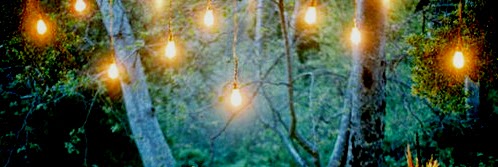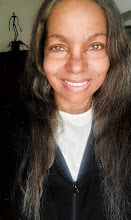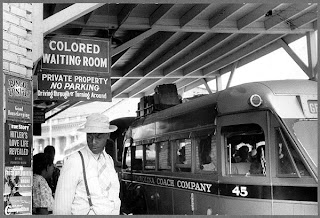Teatime and evening meals outdoors make a poor family feel rich.
 |
| Texas Tea Map |
In the 1950s, when I was young , my mother and I sipped tea with lemon on Saturday afternoons under the shade of our mulberry tree.
We enjoyed lounging on reclaimed, painted-to-match lawn furniture in our little garden like we were English royalty. When neighbors passed and they had time to spare, she invited them for a cup of tea and a cookie. "A cup of tea, a cookie and a smile cost pennies and make a person feel special," she said. It seemed natural for her to transform something or someone without offending or belittling.
Drinking tea made her feel better and look younger, Littie said.
 |
| Teabag & Cucumber Eye Compress |
"Just because you don't have a lot of money," she said, "doesn't mean you don't deserve to feel good or look good."
My mother learned many of her teatime practices from a family in our neighborhood whose ancestors had been Chinese immigrants. By the time I knew these people, they were as African American as the rest of us, having been totally immersed within the African American community through marriage.
However, the forefathers of these Chinese immigrants had told by them the story of their heritage and warned them to preserve what they had been told, lest their historical accounts be lost and forgotten. Chinese contributions were more than teatime. The American West, a historic, glorified and mythologized region of the United States, hardly acknowledges significant presence or recognizes how and why Chinese immigrants arrived, nor documents their diaspora traveling to other regions of the nation such as the Mississippi Delta, making the Chinese American West a story of its own.
After tea, my mother wrapped used teabags in plastic wrap and kept them in the refrigerator. Later, she used them for under-the-eye compresses. "Teabags to get rid of eye bags," she said. We didn't waist anything, even a used teabag.
My mother reserved her more expensive imported Chinese Japanese teas, which she ordered from catalogs, for occasions when it was just the two of us.
 |
| Don't Toss That Teabag! They're not Trash! |
Natural Ways To Get Rid of Bags Under the Eyes
 |
| Iced Cucumber Slices Get Rid of Bags Under Your Eyes |
Cucumber gel from real cucumbers was one of her specialties. She mixed the cucumber gel with brewed green tea and stored it in glass jars in the refrigerator. Another ritual of outdoor entertainment was bringing out a bowl of very thinly sliced cucumbers in ice. On a hot summer day, it was particularly refreshing to place slices over our eyes as we relaxed and talked.
 |
| On occasion at teatime, my mother brought art supplies out and painted birds in the tree |
In the backyard relaxing under the mulberry tree sipping tea, we talked about the teatime rituals in a book she bought on how the ancient Chinese and Japanese ceremonies and tea customs that deepened one's understanding of everything.
My mother was not only very smart, she was practical in her approach to raising me during the Jim Crow era. She knew Rosa Parks and Martin Luther King were out there trying to change things, but she also knew those changes were not going to come immediately. There were so many places African Americans couldn't go and so many things we couldn't do at that time in history, my mother's only recourse was through books and her own imagination. Therefore, she had to devise a method of cultivating me on her own if she wanted to expose me to other cultures. So, under her elegant touch, she turned the simplest occasions, like teatime or eating ice cream, into momentous events.
My mother was not only very smart, she was practical in her approach to raising me during the Jim Crow era. She knew Rosa Parks and Martin Luther King were out there trying to change things, but she also knew those changes were not going to come immediately. There were so many places African Americans couldn't go and so many things we couldn't do at that time in history, my mother's only recourse was through books and her own imagination. Therefore, she had to devise a method of cultivating me on her own if she wanted to expose me to other cultures. So, under her elegant touch, she turned the simplest occasions, like teatime or eating ice cream, into momentous events.
Making tea was as important to my mother as taking tea.
Making Tea
Photography by Mac Jamieson
Cool, minty-green tea snow cones were one of my favorites. My mother had no recipe for this treat; she substituted the summertime snow cone man's method--sugar laden, artificially colored, loose street gravel topping--for her own ingredients--crushed ice, Karo Syrup, condensed milk and powdered green tea.
My mother loved entertaining our neighbors with her inventions. I could write books on my mother's second-hand fix-ups or giving poor relatives and neighbors their first experience with an elegantly set table with fine mostly mix-matched China plates and crystal glasses, proper use of silverware, dinner conversation and indoor plumbing.
Making tea is a serendipitous event. There is no manual that guarantees perfect tea if you follow five easy steps. Read 10 books by tea experts and you will find 10 different procedures and brewing times. The only constant is...read more
 |
| Green Tea Flavored Kakigōri |
Although teatime was a ritual my mother honored, she also loved ice cream and often combined the two by making Japanese green-tea-flavored ice cream.
Cool, minty-green tea snow cones were one of my favorites. My mother had no recipe for this treat; she substituted the summertime snow cone man's method--sugar laden, artificially colored, loose street gravel topping--for her own ingredients--crushed ice, Karo Syrup, condensed milk and powdered green tea.
My mother loved entertaining our neighbors with her inventions. I could write books on my mother's second-hand fix-ups or giving poor relatives and neighbors their first experience with an elegantly set table with fine mostly mix-matched China plates and crystal glasses, proper use of silverware, dinner conversation and indoor plumbing.
 |
| Black Cowboys of Texas |
Littie talked about Saturday Night Suppers at Uncle Tinney's house when she was a young girl living on an isolated Texas farm.
Uncle Tinney, only one of the black cowboys in our family. There were black cowboys and Indian blood in every family I knew. You could see it in the hair, cheekbones and dark red coloration in the skin.
Uncle Tinney was married to my grandmother's sister, part Comanche through their father, my great grandfather, who knew about the old way and taught it to his offspring and in-laws of offspring. That could be the way Uncle Tinney learned some of his outdoor cooking techniques.
My mother said, "Uncle Tinny dug in the ground behind the house and lit a slow fire in the hole. Then he placed a whole pig or most of a pig wrapped in corn shucks in the hole and smoked the pig all day Friday. On Saturday just before the supper, he took out the tender meat, falling off the bone. With fresh white bread his wife baked in their outdoor oven, Uncle Tinny made sandwiches to sell at the supper. Everybody from miles around--black, white and brown--came to eat, drink Uncle Tinney's home-brewed beer, listen to Cousin Roy play is guitar and sing out of tune, and kick up dust dancing in the side yard.
Find more start your Custom Search here.
 |
| Ojibwa Woman Cooking An Ethnographic Biography of Paul Peter Buffalo |
Much changed during the period between my grandmother's childhood and mine. When I was a little girl, my mother had a job, not making much money, but some. She said it didn't take a lot of money to transport us to someplace magical. "Everybody needs to have a magical place," she'd say. "All it takes were a few simple things, a little imagination and a nice cup of tea to start things off."
Before Outdoor Lighting, All-weather Lawn Furniture or Air Conditioning
 |
| Similar to my mother's outdoor lighting |
Littie made a makeshift table from a rough wooden door under the mulberry tree in our little garden, and strung white holiday lights on low hanging branches. Our house had no outdoor lighting fixtures, except for a corner street lamp that came on at dusk and went off at dawn, about the time Mr. Hines's roosters began calling for morning into light.
She would decorate that table like it was in a palace or somewhere and you simply forgot you were in the low-end part of town that still had unpaved streets. Nothing matched, but she didn't care. Nothing had to match to make it elegant.
 |
| Portable Suitcase Record Player |
To complete outdoor entertaining, Littie brought out a record player she had bought at a yard sale.
My mother needed this new 33 rpm format to play her new LPs, albums as they were called. She connected the machine to power in the kitchen and brought the machine to the back door in the evening to lilt music of her favorite jazz artists, like Kenny Burrell or The Dave Brubeck Quartet. As soon as the studio released the music in 1959, she bought Dave Brubeck's album, Time Out, just to get the hit single, Take Five.
 |
| Similar to my mother's outdoor table setting |
"You can't throw an outdoor supper and let your friends stare from their yards," Littie said. "If you don't have something to offer them, keep your supper inside, no matter how hot it gets in there!"
My mother shared without expectations that our neighbors would reciprocate, not because they had less than we had. Some of them had as much or more. But most people don't know how to make a party out of next to nothing like my mother did. Few people I have ever known were as organized in planning anything as my mother. And no one I have ever known has been as sharing as my mother. I learned a lot from her but I wish I had learned more about generosity and grace. People just don't think like my mother, even me.
 |
| Climbing Rose Garden |
 |
| Learn Outdoor Table Arranging |
My mother got so good at outdoor entertaining, grilling and creating recipes she could have written a book. Instead, she went to college and studied nutrition.
When summer comes, hot sweet evening air stirs memories of Littie's outdoor entertaining suppers. As much as I miss her, I never want those memories to fade and as long as there is summer, they never will.
































